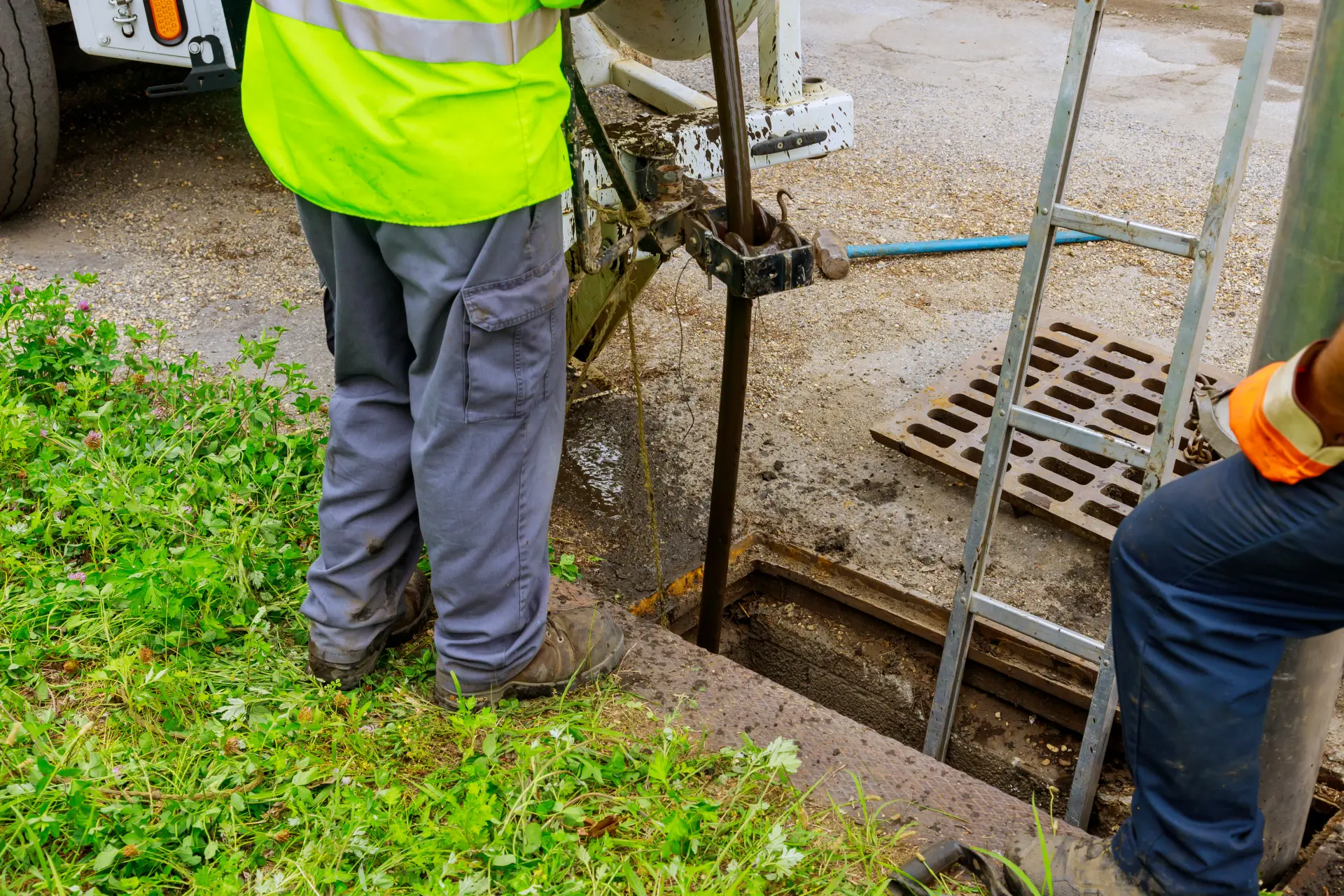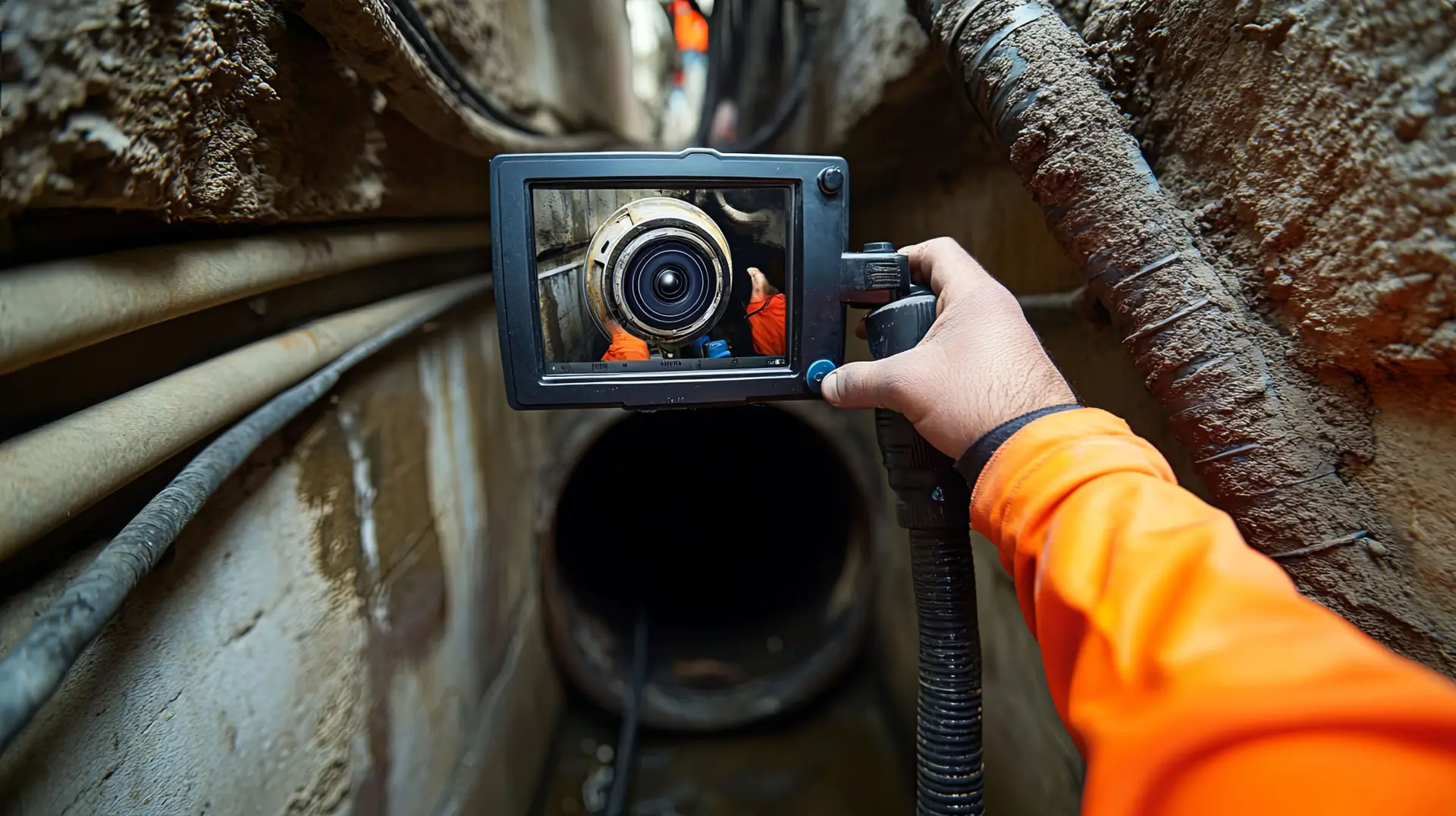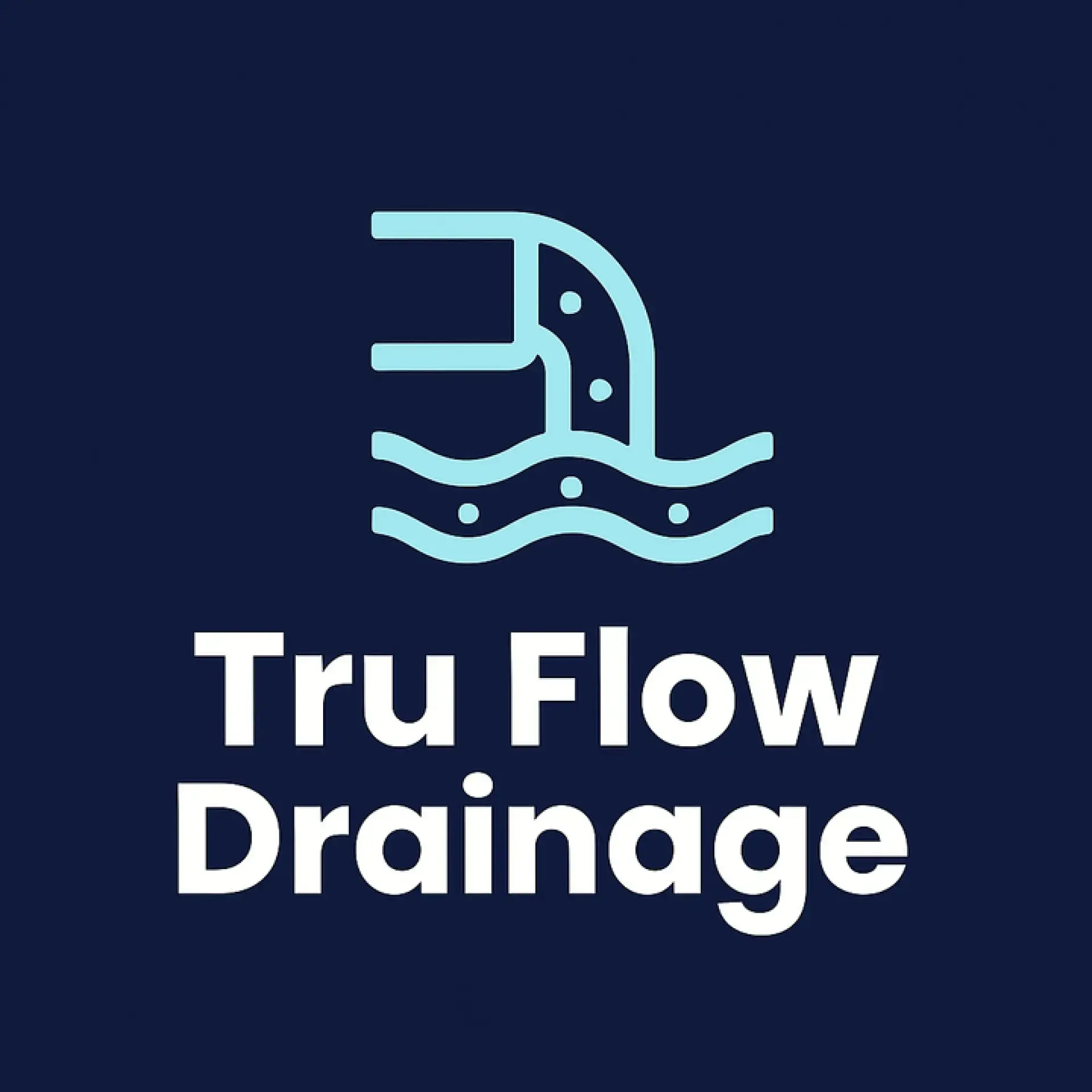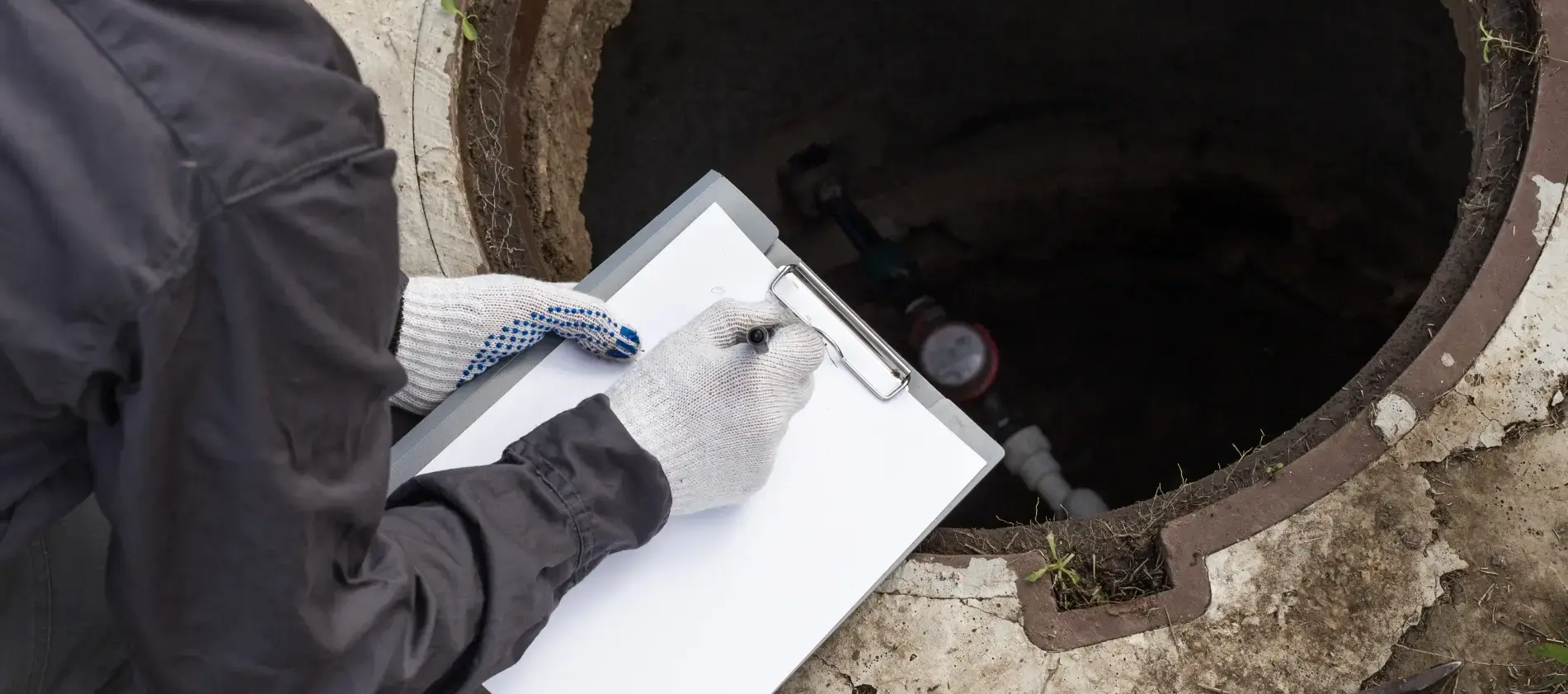Wondering what does a home buyers drain survey involve? Discover how CCTV inspections reveal pipe issues, preventing costly surprises during property purchases.
How a CCTV Home Buyers Drain Survey Works
A CCTV home buyers' drain survey is a simplistic but incredibly useful way of checking the condition of a property's drainage system. The process begins with a qualified drainage specialist visiting the property and locating the main access points to the drains, such as manholes or inspection chambers. Once access is gained, a small waterproof camera is carefully fed into the pipes.
The camera sends back live footage of the drains to the surveyor, allowing them to see the inside of the system in real time. This makes it much easier to spot common issues such as blockages, cracks, collapsed sections, or signs of root intrusion. Modern equipment can travel through long stretches of pipe and around bends, giving a clear view of areas that would otherwise be hidden underground.
As the inspection takes place, the footage is recorded and images are captured to form part of a detailed report. This report normally includes a written summary, photographs, and, in many cases, a diagram or map of the drainage layout. The findings highlight any current problems and note areas that may need attention in the future.
The survey is relatively non-invasive to the actual property, meaning there is no need for digging or interior or exterior disruption. It is usually completed within a few hours, depending on the size of the system, and the results are provided shortly after. This gives home buyers a much clearer understanding of the overall condition of the drains before they commit to the purchase, helping them avoid unexpected repair costs.
The Step-by-Step Process of a Drain Survey
The process begins with an initial discussion between the surveyor and the client. At this stage, the surveyor will ask about any known problems, such as bad odours, slow drains, or recent blockages, and explain what the survey will cover.
The surveyor identifies the access points to the drainage system, such as manholes or inspection chambers. The area is then made safe and prepared for the use of specialist equipment. A small waterproof camera, mounted on a flexible rod or remote-controlled crawler, is carefully fed into the drains. This allows the surveyor to inspect the inside of the pipes without digging or causing damage.

As the camera travels through the system, it sends back live video footage to the surveyor. This footage reveals the condition of the pipes and highlights problems such as cracks, blockages, collapsed sections, or tree root intrusion.
The footage is then recorded and thoroughly analysed to assess the exact location and nature of any issues. Images and video clips are captured to support the findings.
A full report is then prepared. This usually includes a written summary of the drainage condition, images from the survey, and a map of the system layout. The report also provides recommendations for repairs, maintenance, or further investigation if needed.
Finally, the surveyor will explain the findings to the client in clear terms, answering questions and offering guidance on the next steps. If serious issues are found, this stage is crucial for planning repair work.
How Long Does a Drain Survey Take?
The time it takes to complete a drain survey depends on the size of the property, the complexity of the drainage system, and whether any problems are discovered during the inspection. On average, a standard home buyer's drain survey usually takes between one and three hours to carry out.
For smaller properties with simple drainage systems, the process may be finished in under an hour. However, larger homes or properties with more complicated networks of pipes can take several hours to survey properly. If issues such as blockages or collapsed pipes are found, the surveyor may need extra time to investigate fully or carry out additional checks.
Once the physical inspection is thoroughly complete, the surveyor will then review the recorded footage, prepare the written report, and include images or diagrams of the drainage system. This part of the process can take a few more hours, with most clients receiving the final report within 24 to 48 hours after the survey.
Understanding the Survey Report and Results
Once a drain survey is fully complete, the surveyor will offer home buyers a detailed report that goes through the condition of the property's drainage system. This document is designed to be clear and easy to follow, even for those with no technical background.
The report normally involves the use of video footage and images taken during the inspection, along with a written summary of what was found.
It highlights any major drain faults such as cracks, blockages, root intrusion, or collapsed sections, and may also point out areas that could cause problems in the future. Each issue is usually described with its location, severity, and possible impact on the property.

Most reports use a grading system to show how serious each problem is. For example, minor wear and tear may be noted but not require immediate action, while more severe defects are flagged as urgent and in need of repair.
Some reports also include a diagram or map of the drainage layout, which helps homeowners or buyers see exactly where issues are located.
An important part of the report is the recommendations that are given by the professionals. They offer plenty of practical advice on what steps to take next, whether that means routine maintenance, further investigation, or arranging repair work.
For home buyers, this section can be very useful when deciding whether to proceed with the purchase or to negotiate with the seller.
Overall, the survey report is much more than just a record of findings. It can be a useful tool helping buyers and homeowners understand the state of the drains on the property they wish to purchase.
When Should You Book a Drain Survey?
Booking a drain survey at the right time can save buyers and homeowners lots of stress and money. For anyone purchasing a property, the best time to arrange an inspection is before any of your contracts are exchanged.
This makes sure that any hidden drainage issues are discovered as early as possible. In doing so, this gives buyers the chance to renegotiate the price, request repairs, or even reconsider the purchase if serious or costly problems are found.
A drain survey is also worth booking if the property is older, has a history of drainage problems, or is located in an area known for issues such as root intrusion or ground movement. Even if no problems are obvious, older systems are more likely to have hidden defects that could become costly over time.
Homeowners who notice warning signs such as bad odours, slow-draining sinks, repeated blockages, or damp patches in the garden should also book a survey. These are often early signs of damage or obstruction in the pipes that, if left unchecked, can lead to major repairs.
It may also be necessary to book a drain survey before carrying out building work, such as extensions or major landscaping. Knowing the exact layout and condition of the drains helps to avoid accidental damage and ensures that building plans comply with regulations.
Thinking of purchasing a home or property but wondering about the condition of the drains? Let us help using updated technology and pre-purchase drain surveys in Fleetwood, Blackpool and Lancashire. We are a drainage contractor that has been resolving drainage issues for local homes, businesses, and property developers for more than 25 years.


